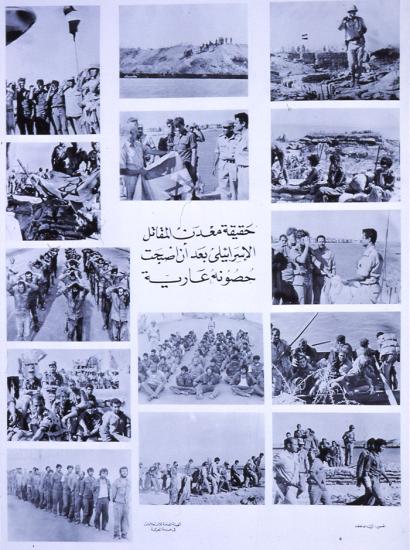Israel’s war with Hamas is now more than six weeks old, making this conflict one of the longer ones in Israeli military history. Israeli forces have split the Gaza Strip in two and are in the process of reducing Hamas positions in and under Gaza City. After an operational pause, the next phase will see Israeli forces move into the southern portion of Gaza to eliminate Hamas elements located there. Israeli officials expect the conflict to last several months; however, international pressure is building for a cease fire given the thirteen thousand-plus Palestinians that have been killed to date, a number that dwarfs by an order of magnitude the twelve hundred Israeli citizens and foreign nationals killed by the Hamas terrorist attack on October 7. As a new phase in the fighting begins, now is an appropriate time to assess how the current conflict compares to previous Arab-Israeli wars.
Israel fought its war for independence in the ten months between May 15, 1948, and March 10, 1949. UN Resolution 181 envisioned a partition of the British mandate of Palestine between Jewish and Palestinian communities, but as British forces withdrew from the region, clashes between Arabs and Jews immediately ignited a broader conflict. Israel declared its independence on May 15, 1948, leading to intervention by Arab forces from Egypt, Jordan, Iraq, Syria, and Lebanon. Fighting continued into the next year until a series of armistice agreements ended the conflict, at least temporarily. For the Palestinians, the conflict is remembered as the Nakba, or catastrophe, for it led to their expulsion from their ancestral homeland and for many began their existence as refugees in neighboring states.
Seven years later the Suez Crisis, sparked by Egyptian President Gamal Abdel Nasser’s nationalization of the Suez Canal, began when Israeli forces seized the Sinai Peninsula between October 29 and November 6, 1956, in league with British and French forces, which landed near Alexandria, ostensibly to protect the canal from the combatants. The Eisenhower administration saw through the deception and backed a UN resolution calling for an immediate cease fire. Israeli forces withdrew from the Sinai in March 1957 and the United Nations positioned a peacekeeping force along the Egyptian-Israeli border.
Ten years later conflict erupted again when skirmishes between Syrian and Israeli forces along the Golan Heights led to Nassar’s mobilization of Egyptian forces along the border with Israel in the Sinai Peninsula. Israel responded with a preemptive attack that overran the Sinai Peninsula, the Golan Heights, and the West Bank of the Jordan River (including East Jerusalem) in just six days.
Skirmishes along the Golan Heights and Suez Canal continued, with Egypt and Syria launching a full-scale invasion on Yom Kippur, October 6, 1973. Syrian and Egyptian forces, which had been armed by the Soviet Union and trained by Soviet advisors, surprised Israeli forces with a large, armored assault, crossing the Suez Canal and nearly overrunning the Golan Heights. Israel Defense Forces, augmented by replacement equipment flown in by the U.S. Air Force, recovered and regained most of the lost ground along the Golan Heights and crossed the Suez Canal into Africa, thereby encircling the Egyptian Third Army before a cease fire on October 26 ended the fighting. Egyptian President Anwar Sadat subsequently signed a peace treaty with Israel, regaining the Sinai Peninsula in return for Egyptian recognition of Israel’s right to exist.
Although the 1973 conflict ended the military participation of neighboring Arab states in the war with Israel, the Palestinians continued to resist with cross-border attacks launched from Lebanon. In retaliation, beginning on June 5, 1982, Israeli Defense Forces attacked Palestinian Liberation Organization (PLO) positions in Beirut and southern Lebanon. In a little more than a week of fighting, Israeli ground forces had reached the outskirts of Beirut, where they besieged the city. Negotiations led to the evacuation of the PLO to other Arab states, while Israeli forces withdrew from most of Lebanon by June 1985. A complete Israeli withdrawal only occurred on May 24, 2000, after fifteen years of guerrilla warfare in southern Lebanon by the newly created militant group Hezbollah.
Smaller incursions into Lebanon and Gaza in 2006, 2009, 2012, 2014, and 2021 round out the history of Arab-Israeli and Palestinian-Israeli conflicts, not including the First (1987–1993) and Second (2000–2005) Intifadas (civil uprisings) in the Israeli occupied West Bank.
As this brief history relates, the Israeli-Hamas war in Gaza is only the latest in a long string of conflicts dating back to the creation of Israel in 1948. The difference now is the Israeli perception that the war with Hamas is an existential crisis, sparked by the largest loss of Jewish life in one day since the Holocaust. International pressure is therefore unlikely to end the hostilities until the Israel Defense Forces achieve their goal of destroying Hamas. What happens after that goal is achieved, however, remains an open question. History would suggest that absent a comprehensive Israeli-Palestinian peace accord, conflict will erupt again in the future.

















